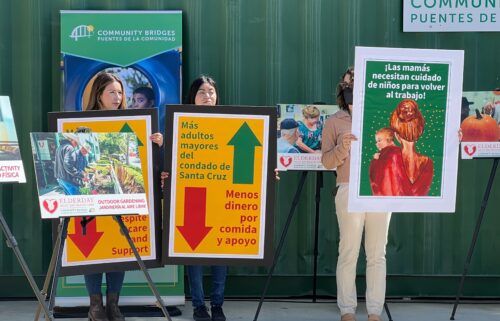Sick pelicans continue to be found in Santa Cruz County, but fewer than last year
SANTA CRUZ, Calif. (KION) - Starving pelicans are showing up in places you'd never expect—even walking into shops along the Santa Cruz Wharf.
Wildlife experts are raising concerns as more juvenile pelicans are turning up disoriented, cold, and hungry.
While rescue centers are seeing fewer pelicans overall compared to last year, the birds that are being found are often in distress and far from where they should be.
According to Native Animal Rescue in Santa Cruz, there’s been a noticeable drop in the number of rescued pelicans this year.
"At this time last year, we had received about 200 pelicans, whereas this year we've only received about 50. Which is a lot of pelicans, but not anywhere near what we were at. The most we've received at one time here is about 12, whereas last year we received about 40," said Amy Red Feather, wildlife technician at Native Animal Rescue of Santa Cruz County.
Adding to the concern, the birds are being found in unusual and sometimes alarming locations—far from the coast.
"We found one near Community Hospital on the Monterey Peninsula. We found one at the landfill in Marina. We found one in Royal Oaks. They're being found in places where pelicans shouldn't be," said Beth Brookhouser, Vice President of Marketing & Communications at SPCA Monterey County.
"Ben Lomond, you know, in the forest, is not a place where you would normally find a pelican. So they're landing places where they shouldn't be, agricultural fields and places like that," said Amy Red Feather.
While many regions in California are dealing with adult pelicans suffering from domoic acid poisoning caused by toxic algae blooms, Santa Cruz rescuers are seeing a different trend.
"A lot of other places are seeing pelicans that are very sick with domoic acid poisoning. We're not seeing a lot of those sick adults. But our other centers are, especially International Bird Rescue, which has quite a few very, very sick older adult birds. We're really only seeing the juveniles that haven't quite learned to fish yet," said Amy Red Feather.
Rescuers believe the influx of juveniles may point to a broader issue a lack of food.
"Most of these pelicans are starving juveniles, so they're not quite sure what they're doing. Maybe they're not fishing properly, and that's why they're ending up in very strange places," said Amy Red Feather.
Many of these birds show clear signs of distress. Rescuers say they're not reacting to their surroundings something that’s especially dangerous in populated areas.
"When cars drive up to them, they're not moving out of the way. When people walk up to them, they're standing there looking down, looking depressed kind of droopy winged," said Beth Brookhouser.
Over the past week, SPCA Monterey County has rescued 28 pelicans many of them cold, weak, and unable to fly. The rescue team is doing everything they can to stabilize the birds and prepare them for release.
"We act as the emergency room to rescue the birds, stabilize them, get them warm, get them fed and hydrated, and get them back on their feet to ultimately be released back into the wild," said Beth Brookhouser.
The SPCA is asking the community to stay alert, if you see a pelican in an unusual place or one that doesn’t fly away when approached, keep an eye on it and contact SPCA Monterey County for help.




